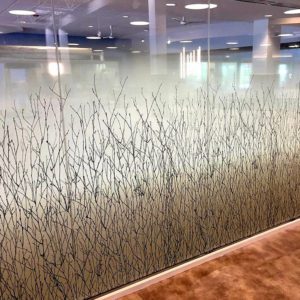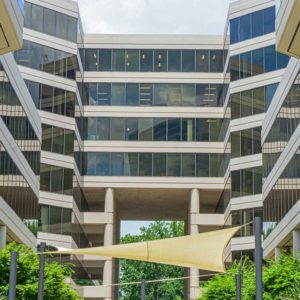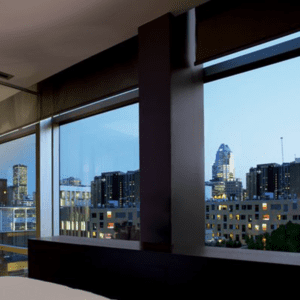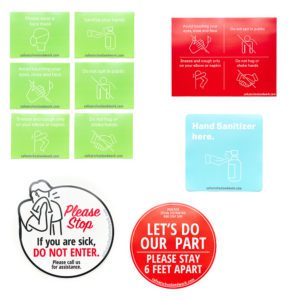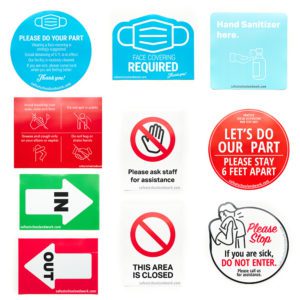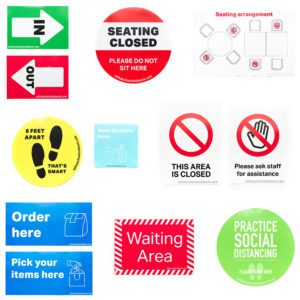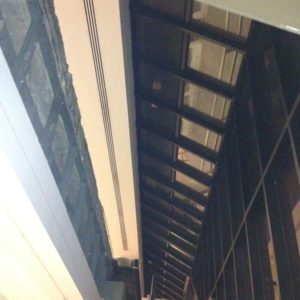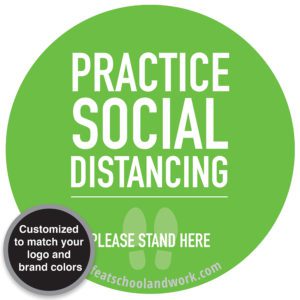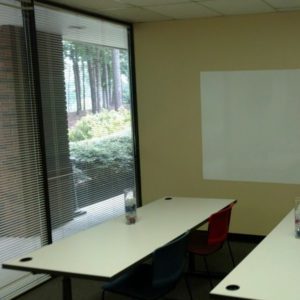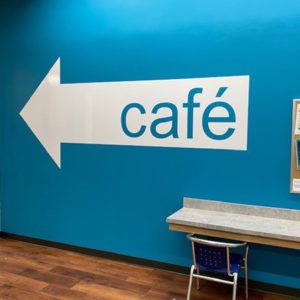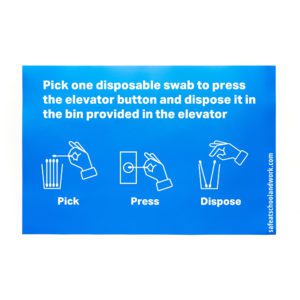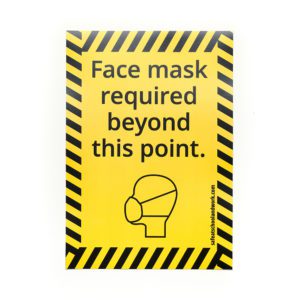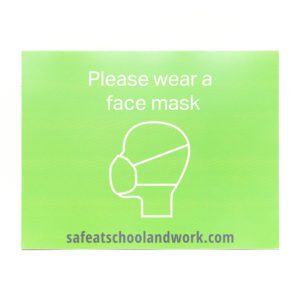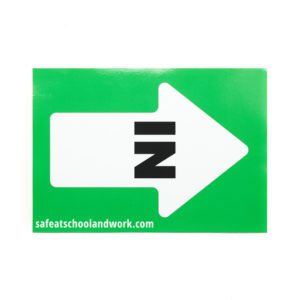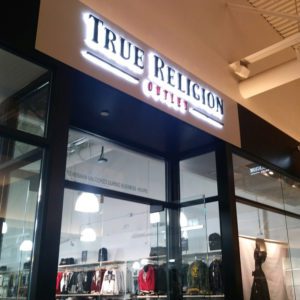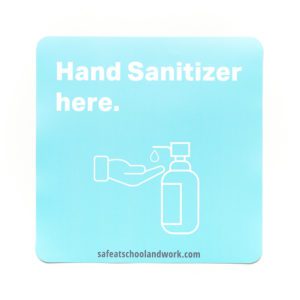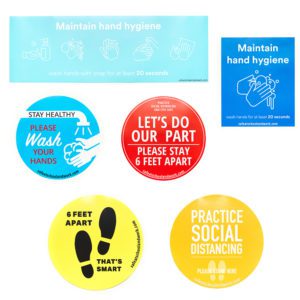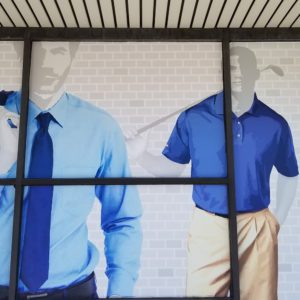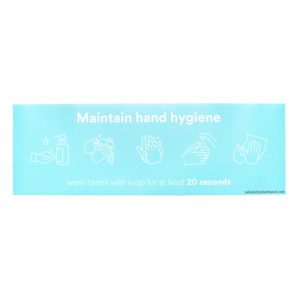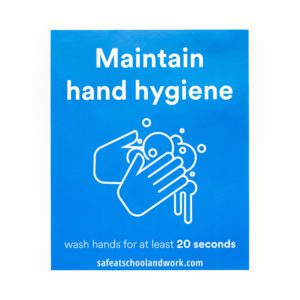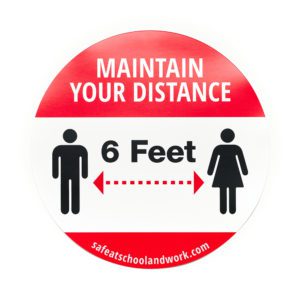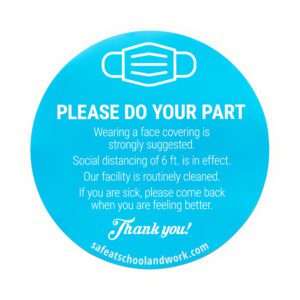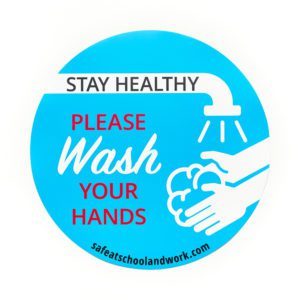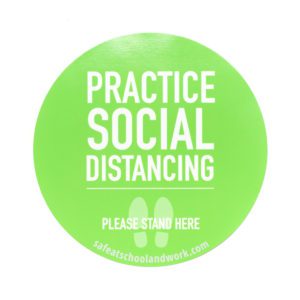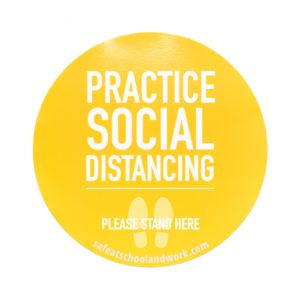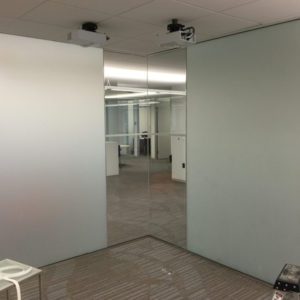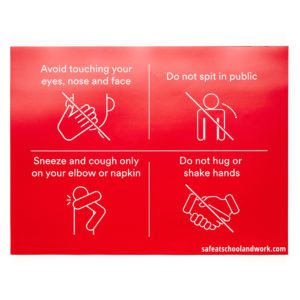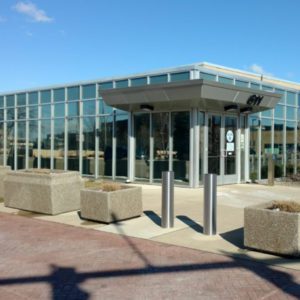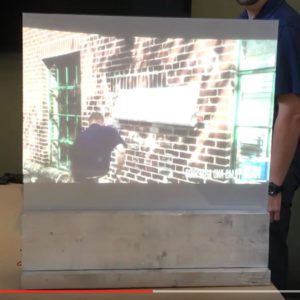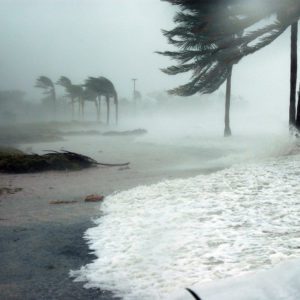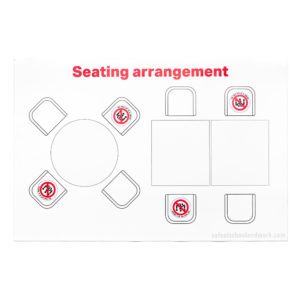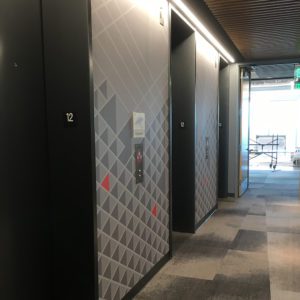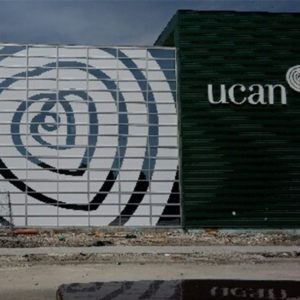
An edited version of this blog was published on Campus Safety Magazine
NGS is on a mission to provide school safety and protect people and property. And with the tragic increase in school shootings over the past several decades, we’ve partnered with several school districts across the country to help them strengthen their building perimeters by hardening their glass windows and doors – enabling them to delay intrusion, limit visibility, and increase response times.
And while we’re grateful to play a role in school safety and keeping students and staff safe, we don’t pretend to be experts on all facets of school safety. That’s why we interviewed four leading school safety experts from three different districts about what they’re doing to promote school safety and how they are ensuring their staff and students are protected but given the opportunity to thrive.
Here’s what they had to say.
Safety First
Number one on our list every day [is] the safety and security of the students and the staff in the district.” States Todd Shirley, Chief Operations Officer, Forsyth County Schools, Georgia. “No kid can come to school and function properly without safety features and precautions in place.” Forsyth County is made up of 40 schools and 52,000 students.
“Safety is always the number one priority,” echoes Dr. Paul Cash, Executive Director of Facilities and Operations, Mansfield Independent School District, Texas. Mansfield ISD is 92 square miles, 43 campuses, and 35,000 students.
But while safety is supreme, the general public doesn’t always understand everything that entails. “When you mention school safety to people, the first thing that they think about are police officers,” states Shirley. “But our primary focus is thinking beyond that, thinking outside the box.”
So what does school safety entail and how are school safety experts thinking innovatively about the responsibility of keeping staff and students safe?
Russell Gould, who oversees the safety, security, and emergency management of the 55 schools and 70,000 students in the School District of Osceola County, Florida, outlines a basic framework: “You have the emotional and mental stability the students and staff, and the physical security of a building.”
Inside Out: Mental and Emotional Health
“The problem with school safety is that people typically try to find a single solution to a complex problem,” states Bruno Dias, Director of Safety and Security, Mansfield Independent School District. “All of the different parts need to work collectively if we want to have a robust and effective safety security framework.”
Culture is Key to Mental and Emotional Health and Wellbeing
As the old adage says, “An ounce of prevention is worth a pound of cure,” the best school safety framework starts with emotional health and wellbeing.
“For school safety professionals, it’s more important than ever to think about emotional and mental wellbeing,” comments Dias. “It’s not that school violence is new. It’s the frequency and the number of casualties that seem to be evolving ever since Columbine. Kids are struggling in many ways socially and emotionally.”
And promoting the mental and emotional health of students and staff begins with building a healthy culture.
“The most important thing for ensuring the safety of a school system is a good climate and culture,” states Shirley. The hope is that “someone can receive a service or help before they come onto a campus,” adds Gould. Adds Dias: “we train our staff to identify concerning behavior so that we can offer kids the help and support that they need.”
Creating an open culture where people are not afraid to ask for help or speak up when they notice others struggling is critical. “The primary focus is making sure we support the staff in our buildings to create the best possible environment for our kids,” comments Shirley. “Are we providing the best environment so kids can be successful?” asks Cash.
The answer to that question begins with climate.
Climate is Crucial
Maslow’s hierarchy of needs tells us that the most fundamental elements needed for human existence are food, water, and shelter. In that vein, Cash comments on the importance of climate in school safety: “Are we making sure we keep the lights on? Are we making sure that the temperature is right? Are we making [the climate] safe?”
Cash tells us that a good climate focuses on the basics: food, lights, locks. “We think about the lockdown buttons. We think about the alarms. We think about the fire drills,” adds Shirley.
Even something as basic as the temperature in a room must be considered: “people get irritated when they get too hot or cold,” observes Cash.
Promoting mental health and wellbeing, cultivating a positive culture, and maintaining a good climate are the fundamentals of school safety. “We spend a lot of time making sure that our buildings are in the shape they need to be for students and teachers to do what they need to do” states Cash
But to develop a robust, multi-dimension framework as Dias recommends, school safety professionals must also consider building security.
Outside-in: Physical Security
“We must not lose sight of physical security,” emphasizes Dias. But the physical security of a building, like mental and emotional health, culture, and climate, is multi-dimensional, multi-faceted, and complex. Important considerations, decisions, and strategies should be employed about access control, School Resource Officers (SROs), and building hardening.
Access Control
Keeping schools safe requires only allowing access to staff and students or authorized visitors. Limiting the number of entry points, technologies such as key cards, centralized lock systems, and visitor sign procedures help school administrators control the daily flow of people coming and going into a school building.
A new development in access control is the use of vestibules: a “holding room” that limits access to the entire campus before proper security clearance measures have been completed. This strategy has been implemented by Mansfield ISD and many other districts across the country.
School Resource Officers
For many districts across the country, physical security includes the use of school resource officers. Forsyth County, for instance, puts an officer on every campus, as does Mansfield ISD. “Previously, we just had high school and middle school campuses with officers. Now all 43 campuses have at least one officer on campus” states Cash.
As first-responders, the hope is that SROs aren’t needed very often. But if they are, building envelope security measures that deny or delay entry are essential to ensuring safety.
Building Hardening: Window Film
When it comes to building envelope security, glass is the weakest link. Easily broken, glass is the first target for unwanted intruders. “The weak side of glass is that the contractor-grade glass typically found in schools can be easily broken,” says Dias.
But in order to balance security with a good climate, school safety leaders can’t turn to metal bars or rolldown gates as solutions, as that would be counterproductive. States Dias, “We’re trying to balance a secure place with a welcoming learning environment. In other words, we don’t want to make our schools look like a prison.”
Thankfully, innovative products such as window film can help harden glass windows and doors, delay entry time, and reduce visibility, without tampering with the positive aspects of a building necessary for students to succeed.
Delayed Entry
Security window film has been shown to delay entry by between two to six minutes. This prevents perpetrators from gaining immediate access to the school and gives schools additional time to initiate emergency response plans and first responders to arrive at the scene.
“Now, if we do have a situation where a threat does come onto a campus,” states Gould, “the window film serves as a great barrier and buys a large amount of time.” “What safety film does across the board,” adds Cash, “is it gives every school administrator and school resource officers time to respond.”
“As a former SWAT commander who had to breach buildings, I know how difficult it is to bypass a security film,” says Dias. “I endorse it.”
Visibility
The privacy benefit that comes with shading and tinting in window film also has a particular safety benefit: windows that are shaded or darkened on the exterior make it more difficult for shooters to target individuals within a school. This benefit can serve as a major deterrent to a single-minded individual who means to do harm with a firearm.
“Thinking like a predator that wants to create destruction, you want to go into the building after a large number of targets,” states Shirley. “You want to create a situation where if somebody’s walking around the perimeter of the building, they can’t look in and see large groups of kids.”
Tinted versions of safety and security serve as “a very powerful covering that doesn’t permit someone to look through the window and see if anybody’s inside,” comments Gould.
Dual-function: solar and security
In addition to delaying entry and reducing visibility, some security window film products can also improve building energy efficiency. “Another reason we went with the tinted film was to help with energy savings,” comments Gould. “It helps lighten the load on our HVAC systems.”
Windows are responsible for as much as 34% of HVAC energy loss 28% of cooling energy demand in commercial buildings. But Low-Emissivity (Low-E) window films, when applied to single-pane glass, can reduce heat loss in the colder months by up to 40%, reduce solar heat gain in the warmer months by up to 35%, and improve performance to almost dual-pane level. And Infrared (IR) rejecting films do not change the look of the windows, yet they can reject as much as 97% of the IR energy and 99% of the UV rays.
Cut through the Clutter: How to Evaluate and Select Products
The level of complexity inherent to school safety is matched or exceeded by the quantity and complexity of products, services, and vendors in the marketplace. For school leaders, the job is to cut through the clutter of available solutions.
“There are a lot of things out there that people try to sell you on,” states Shirley. “As soon as we do have a school shooting, which is a tragedy, a lot of those things come out of the woodwork. Some of them are great ideas, and some of them are not so great ideas.”
So how can you tell the difference?
Communities and Committees
When it comes to selecting and implementing school safety products and solutions, the importance of establishing committees and involving the community cannot be understated. “As soon as Parkland happened,” states Cash, “we put together a committee to talk about what we are doing about school safety.”
Forming committees and involving the local community brings multiple perspectives to the table and allows districts to gain critical insights and perspectives. “The biggest thing that we rely on is our people, our team,” says Gould. “We look at it from every angle.”
Try Before You Buy
Being able to test products and services before districtwide rollouts is also crucial when evaluating options. “Don’t buy a bill of goods that you don’t have an opportunity to look at,” advises Shirley.
Ask companies for samples, product demonstrations, and periods of time to test their products before committing to them districtwide. This will help you be able to know if the product will do what it’s being advertised to do, if the vendor is trustworthy, and where it fits into your overall school safety strategy framework.
Ask Around
Calling other district administrators to ask about what they are doing in the realm of school safety can help filter bad from good products, services, or vendors. Other districts may have already done research that will prove invaluable in the decision-making process.
“Be very selective,” says Shirley. “Call the people that have been through it. Do your research and don’t be quick to jump on something that isn’t proven and that you haven’t tested. I’m just a phone call away, and I’m happy to talk about what we’re doing in Forsyth County for the safety of our schools.”
Safety Begets Success
At NGS, we believe every student in the country deserves a chance to succeed. But no one can succeed without safety. As this article has shown in great detail, promoting school safety is multi-faceted and complex and deserves robust and thorough frameworks. Safety and security window film is only a small piece of the puzzle.
But because we believe so strongly in protecting people and property, we’ve partnered with school districts across the country to develop a building hardening program that offers surveys that mirror the Federal Commission on School Safety, software that tailors the scope and price of each building to match a budget or grant, and nationwide contracting vehicles that are Edgar-compliant to streamline requisition.
From product testing to installation and everything in between, we’re committed to ensuring that districts get the highest levels of customer service. “NGS was outstanding at not selling us an untested product,” says Shirley. “They let us look at it, test it.” “The attention to detail that we received in every aspect of the project really set NGS apart,” adds Cash. “And the customer service I go along the way was top notch.”
Today’s students are the future of our nation, and we’re dedicated to doing everything we can to help them succeed. Or, in Gould’s words, we must “make sure that every student that comes to us in a given day goes home to their parents and their family in the exact same way that they came to us.”
We couldn’t have said it better ourselves.



























